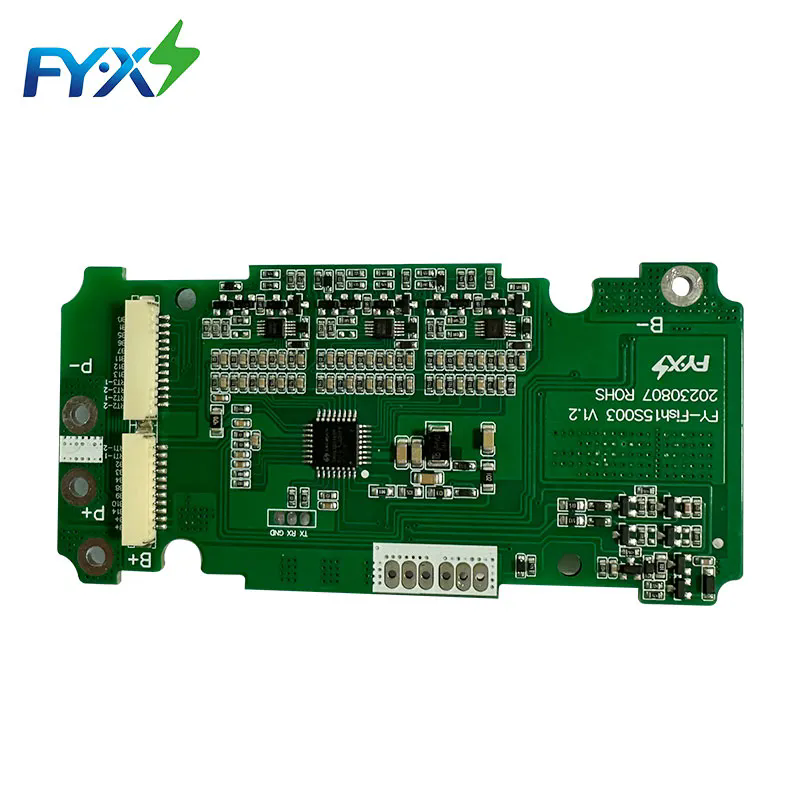Understanding the BMS for E-Scooters: Ensuring Safety and Efficiency
2024-08-29
In the realm of electric scooters, the Battery Management System (BMS) plays a crucial role in maintaining the safety, efficiency, and longevity of the vehicle's battery. A well-designed BMS is essential for the optimal performance of an e-scooter, as it monitors and manages the battery's health and functionality. In this blog, we'll delve into the key functions, benefits, and considerations of a BMS for e-scooters.
What Is a Battery Management System (BMS)?
A Battery Management System (BMS) is an electronic system that manages and protects the rechargeable battery pack in an electric scooter. It oversees various aspects of the battery's operation, including charging, discharging, and balancing. The BMS ensures that the battery operates within safe parameters and provides critical information to both the scooter's control system and the user.
Key Functions of a BMS in E-Scooters
1. Battery Monitoring: The BMS continuously monitors the voltage, current, temperature, and state of charge (SOC) of each cell in the battery pack. This data helps in assessing the battery's overall health and performance.
2. Overcharge Protection: To prevent damage and potential safety hazards, the BMS monitors the charging process and ensures that the battery does not exceed its maximum voltage. It can cut off the charging process if it detects overcharging.
3. Overdischarge Protection: Similarly, the BMS prevents the battery from discharging below its safe minimum voltage. Deep discharges can lead to reduced battery life and potential damage.
4. Cell Balancing: In a multi-cell battery pack, cells may become unbalanced over time, leading to inefficiencies and reduced performance. The BMS balances the charge across all cells to ensure consistent performance and longevity.
5. Temperature Management: The BMS monitors the battery's temperature and ensures it remains within safe operating limits. Overheating can lead to performance issues and safety concerns, so the BMS may throttle performance or shut down if temperatures become too high.
6. Short Circuit Protection: The BMS detects short circuits and disconnects the battery to prevent potential damage or hazards. This function is crucial for maintaining safety during operation and charging.
7. Current Limiting: The BMS can limit the maximum current drawn from the battery to protect against excessive loads that could lead to overheating or damage.
8. Communication: The BMS communicates with the e-scooter's control system to provide real-time data on battery status. This information is often displayed on the scooter’s dashboard and helps users monitor battery health and remaining range.
Benefits of a BMS for E-Scooters
1. Enhanced Safety: By providing protection against overcharging, overdischarging, and short circuits, the BMS helps prevent potential hazards and ensures safe operation of the e-scooter.
2. Extended Battery Life: The BMS optimizes battery performance through cell balancing and temperature management, which can extend the overall lifespan of the battery.
3. Improved Performance: With effective monitoring and current limiting, the BMS helps maintain optimal performance levels, ensuring the e-scooter runs efficiently and reliably.
4. Real-Time Data: The BMS provides valuable information about the battery's status, helping users make informed decisions about charging and usage.
5. Preventative Maintenance: Early detection of potential issues through the BMS allows for timely maintenance and prevents more significant problems down the line.
6. Energy Efficiency: By balancing cells and managing power usage, the BMS helps maximize the energy efficiency of the battery, resulting in better range and performance.
Considerations When Choosing a BMS for E-Scooters
1. Compatibility: Ensure that the BMS is compatible with the specific battery pack used in your e-scooter. Compatibility with the battery's voltage and capacity is crucial for proper functionality.
2. Features: Evaluate the features of the BMS, such as temperature monitoring, cell balancing, and communication capabilities. Choose a BMS that meets the needs of your e-scooter and provides the necessary protection and performance.
3. Quality and Reliability: Opt for a high-quality BMS from reputable manufacturers to ensure reliability and durability. A well-designed BMS is essential for the safety and performance of your e-scooter.
4. Ease of Integration: Consider how easily the BMS can be integrated into your e-scooter’s existing system. Look for user-friendly installation and setup processes.
5. Cost: While it’s important to invest in a good BMS, consider the cost in relation to the features and benefits it offers. A balance between quality and affordability is key.
Conclusion
The Battery Management System (BMS) is a vital component of an e-scooter's battery pack, playing a significant role in ensuring safety, performance, and longevity. By monitoring and managing various aspects of the battery's operation, the BMS helps maintain optimal functionality and provides essential protection against potential hazards. When selecting a BMS for your e-scooter, consider factors such as compatibility, features, and quality to ensure a reliable and efficient system. With the right BMS in place, you can enjoy a safer and more enjoyable riding experience, knowing that your e-scooter's battery is in good hands.



